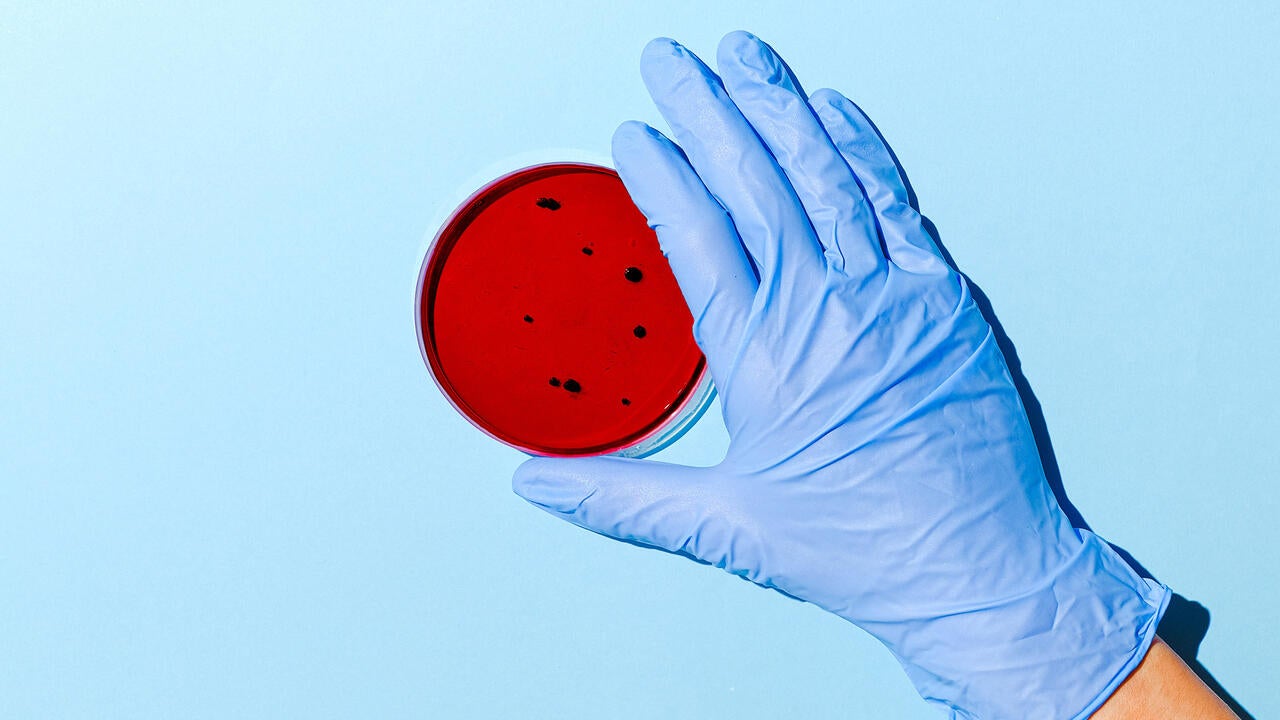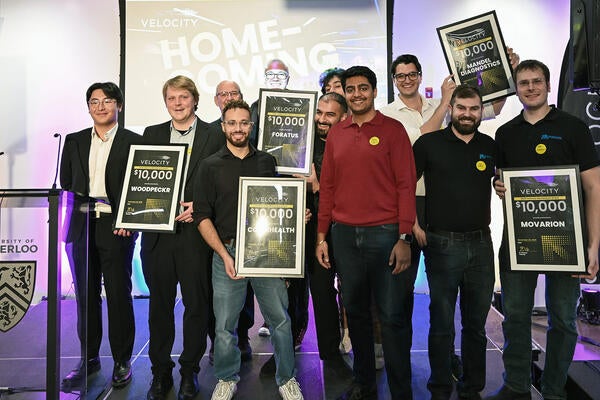
Rebooting with Research
Detecting and mitigating COVID-19 with research

Detecting and mitigating COVID-19 with research
By Janet Janes Office of ResearchVaccine development, testing, diagnostics and new technologies are all part of the University of Waterloo’s research, innovation and contribution to the battle against COVID-19.
One of the first steps in managing a COVID-19 case is testing. With results taking two to five days, Nicoya Life Sciences, a Waterloo startup which uses a powerful biosensor technology to make scientific instruments, is working on a rapid, saliva-based test with results in less than 30 minutes. Improving testing time would be helpful in containing the spread of COVID-19 and enable results to be pushed out to apps for tracing and tracking.
“One of the big issues that we saw when the epidemics were getting worse and worse, was that the turnaround time for testing was a major problem,” said Ryan Denomee, founder and CEO, Nicoya Life Sciences.
He was one of five scientists, engineers and entrepreneurs who discussed their research at the fifth of six online panel sessions “Rebooting with Research: Viral detection and mitigation.”
Moderated by Sushanta Mitra, professor of mechanical and mechatronics engineering, physics and astronomy and executive director for the Waterloo Institute for Nanotechnology, the Post-COVID-19 reboot panel is hosted by Waterloo’s Gateway for Enterprises to Discover Innovation (GEDI) at Waterloo.
Improved accuracy, more information about prediction and history and more connected testing with smartphones (also known as geospatial mapping) is needed because a fast response is critical in order to isolate positive cases quickly, said Shirley Tang, professor of chemistry and associate dean of research for the Faculty of Science at Waterloo.
Along with testing, the World Health Organization (WHO) is now recommending the use of chest x-rays in screening of COVID-19, said Karim S. Karim, professor of electrical and computer engineering and executive director of the Centre for Bioengineering and Biotechnology at Waterloo. He is also co-founder and chief technology officer of KA Imaging.
Professor Karim’s dual energy x-ray technology could catch cases that standard methods miss. Its portability means it could be used in long-term care facilities or intensive care units, and it could be beneficial in low income and some high-density populations where physicians don’t have access to standard equipment.
Artificial intelligence can also assist in areas where standard testing is difficult to interpret, and it may also be able to play a role in providing insight for personalized care, managing supply chains and hospital resource management related to COVID-19, and even social distancing by understanding location and density of people.
“These kinds of predictive analytics can really give our policy makers and our health-care workers early warning signs, as well as ways to figure out how to actually control spread and mitigate the situation,” said Alexander Wong, associate professor of systems design engineering, Canada Research Chair in Artificial Intelligence and Medical Imaging and co-founder and chief scientist with DarwinAI.
Professor Roderick Slavcev with the School of Pharmacy and department of chemistry, outlined Waterloo’s approaches to developing a vaccine, one of which includes a DNA vaccine aimed at trying to deliver viral components to cells in the lower respiratory tract to trigger an immune response by mimicking the root of infection.
Waterloo, in conjunction with Dalhousie University and a Chinese company, has one of the 102 vaccines listed with WHO. Vaccines typically take 20 years to develop and scientists are trying to compact this into 12 to 18 months which means non-conventional approaches can make a difference.
“Never have I ever seen so much research done in the vaccine space in such a short time. This is truly an exciting time,” Slavcev said. “And not to take away from the grimness of COVID-19, but what is actually happening here on the scientific front is rather revolutionary,”

Read more
Post-COVID poses unique challenges alongside unique opportunities in approaching real-world problems

Read more
The Shanghai Ranking Consultancy also ranks 13 Waterloo subjects in the top 50 in the world

Read more
Velocity’s $10K Momentum Grants help student builders become full-time founders
The University of Waterloo acknowledges that much of our work takes place on the traditional territory of the Neutral, Anishinaabeg, and Haudenosaunee peoples. Our main campus is situated on the Haldimand Tract, the land granted to the Six Nations that includes six miles on each side of the Grand River. Our active work toward reconciliation takes place across our campuses through research, learning, teaching, and community building, and is co-ordinated within the Office of Indigenous Relations.